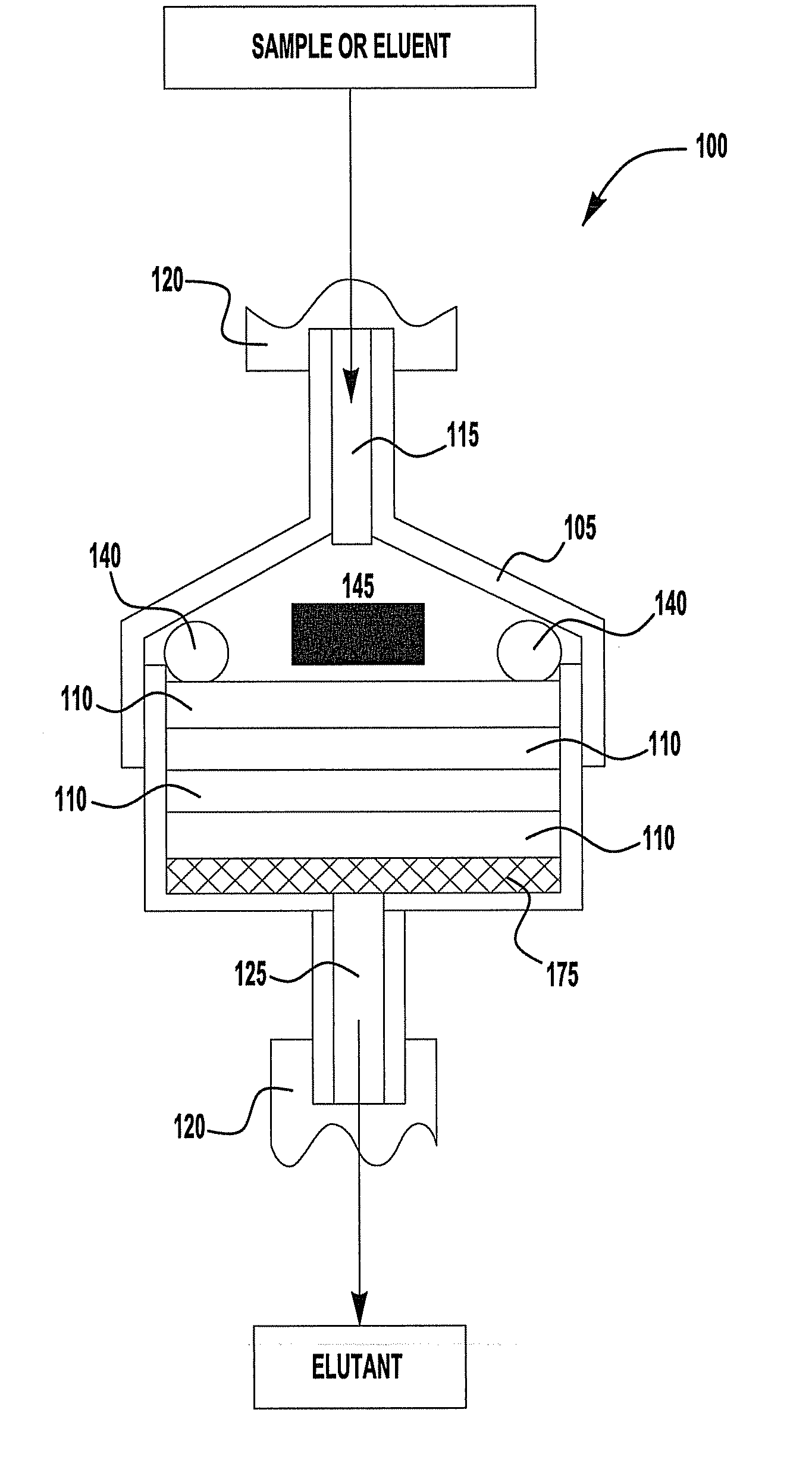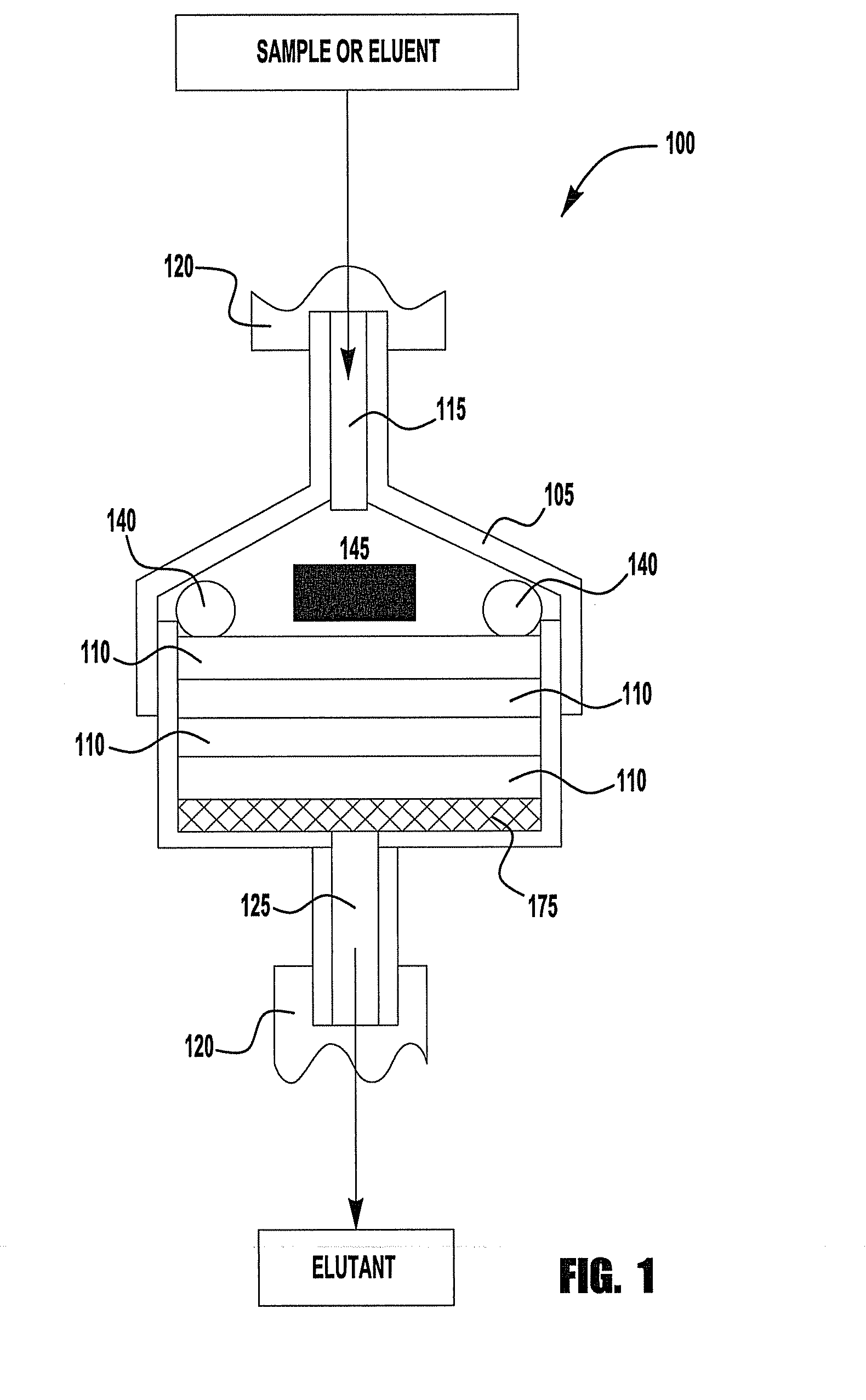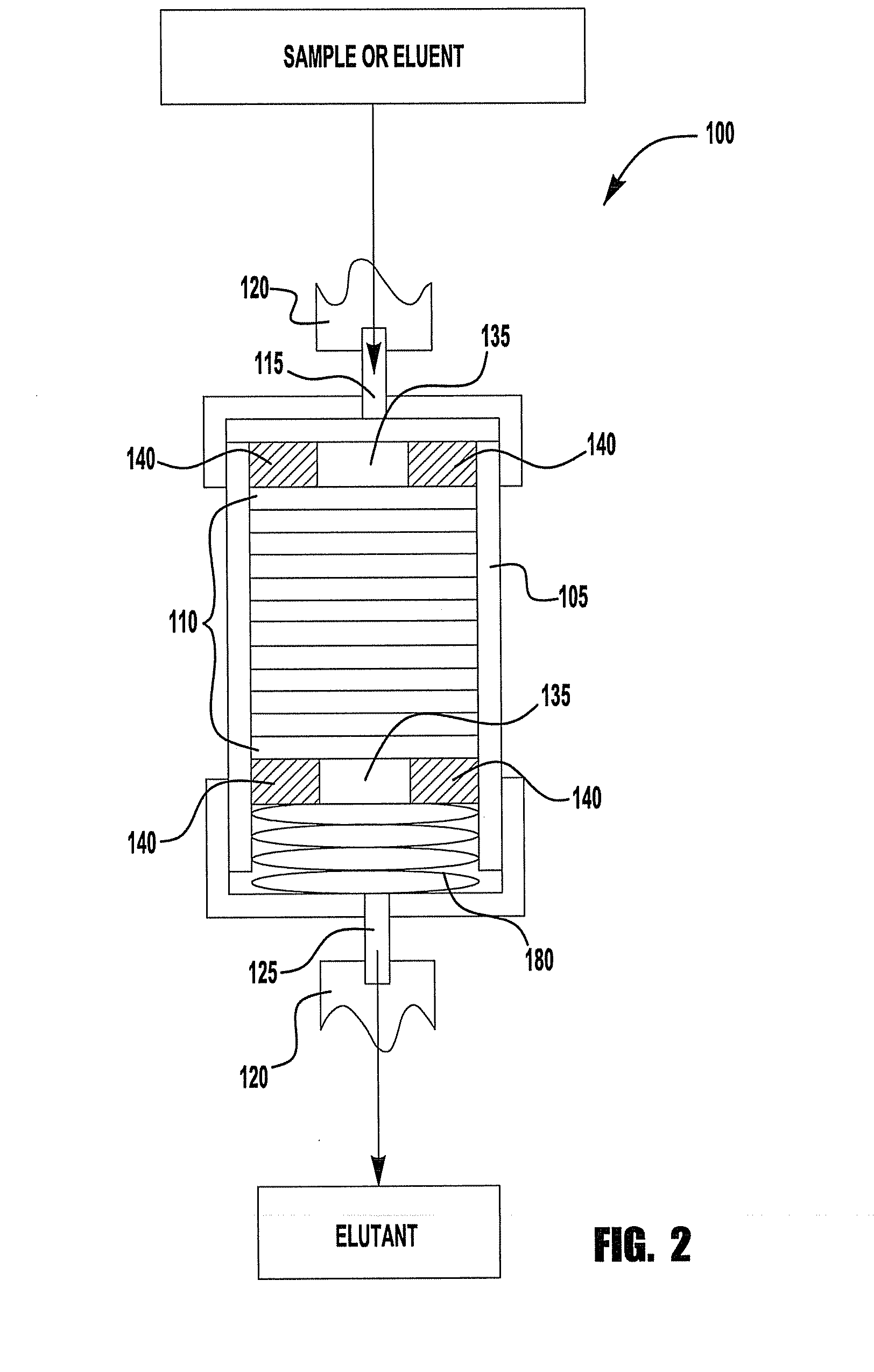Chromatography device
a chromatography and ion exchanger technology, applied in the direction of ion exchangers, separation processes, instruments, etc., can solve the problems of high analysis and manufacturing costs, too expensive columns, and considered disposabl
- Summary
- Abstract
- Description
- Claims
- Application Information
AI Technical Summary
Problems solved by technology
Method used
Image
Examples
example 1
Formation of Nano Alumina Medium
[0056]Slurries of nano alumina medium were prepared by dispersing 6 g of microglass fibers (Lauscha Fiber International, borosilicate glass, grade B-06-F, 0.6 μm diameter) in 0.75 L of permeate from a reverse osmosis water generator using a kitchen style blender (12 speed Osterizer blender) on a “low-clean” setting for 1 minute. Aluminum powder (1.8 g; Atlantic Equipment Engineers, grade AL-100, 1-5 μm) was added to the microglass fibers such that after the reaction the solids consisted of 40 parts AlOOH and 60 parts microglass fibers. Two slurries of 750 mL were prepared. Ammonium hydroxide (8 ml of 36% per 750 ml of slurry) was added to initiate the reaction of aluminum powder with water to form the AlOOH and hydrogen. The mixture was heated to and maintained at boiling until the mixture was milky white. Then the mixture was cooled and neutralized to approximately pH 7 using hydrochloric acid. FIG. 6 shows a transmission electron micrograph of the ...
example 2
Formation of Nano Alumina Medium Loaded with Nanopowders
[0058]In this example, either 4.3 g of TiO2 or 3.9 g of SiO2 dry nanopowders were added to the slurries prepared in Example 1 above to produce about 30% TiO2 or about 28% SiO2, respectively, particulate powder loading. The zeta potentials were +31±4 mV for 30% nano titania and +56±6 mV for 28% nano silica. FIG. 7 shows a transmission electron micrograph of nano alumina medium having nano silica particles having a diameter of about 10 nm electrostatically adhered to the nano alumina fibers.
[0059]SiO2 is electronegative at a pH greater than about 2 and therefore it was expected that its zeta potential would be more negative when the SiO2 was added to the nano alumina fibers. Surprisingly, the zeta potential was actually more electropositive when the SiO2 was added to the nano alumina fibers. See Table 1. The nano alumina medium that includes nano silica particles provides a stationary phase that has more external surface area tha...
example 3
Formation of Nano Alumina Medium Including Nanopowders
[0060]A slurry of nano alumina medium was prepared as described in Example 2. After cooling, 10 mL of 28% ammonium hydroxide was added to the slurry, followed by 3.7 g FeCl3*6H2O dissolved in about 20-30 mL of RO water. The slurry was dried and inspected by high resolution transmission electron microscopy. A layer of FeOOH particles, with an approximate size of about 1-10 nm was electrostatically adhered to the nano alumina fibers. The adhesion of FeOOH to the nano alumina fibers can alter the retention factors for some biological particles in chromatographic separation.
[0061]Alternatively, 8.8 g of manganese chloride (MnCl2*4H2O) (Aldrich Chemical) was added to the slurry and the medium was prepared as described above (29% AlOOH, 28% MnO2, 43% microglass).
PUM
| Property | Measurement | Unit |
|---|---|---|
| Pressure | aaaaa | aaaaa |
| Pressure drop | aaaaa | aaaaa |
| Velocity | aaaaa | aaaaa |
Abstract
Description
Claims
Application Information
 Login to View More
Login to View More - R&D
- Intellectual Property
- Life Sciences
- Materials
- Tech Scout
- Unparalleled Data Quality
- Higher Quality Content
- 60% Fewer Hallucinations
Browse by: Latest US Patents, China's latest patents, Technical Efficacy Thesaurus, Application Domain, Technology Topic, Popular Technical Reports.
© 2025 PatSnap. All rights reserved.Legal|Privacy policy|Modern Slavery Act Transparency Statement|Sitemap|About US| Contact US: help@patsnap.com



